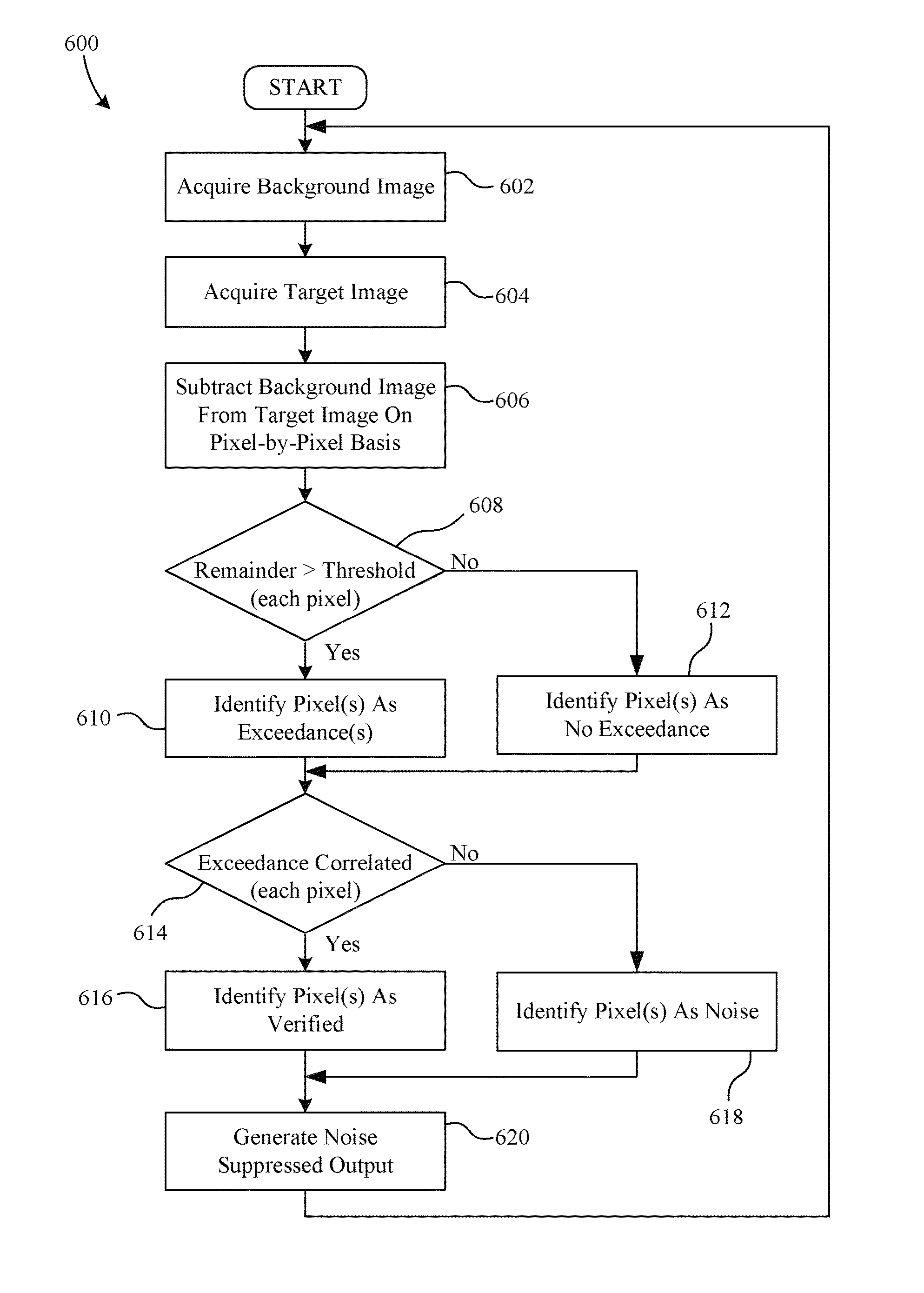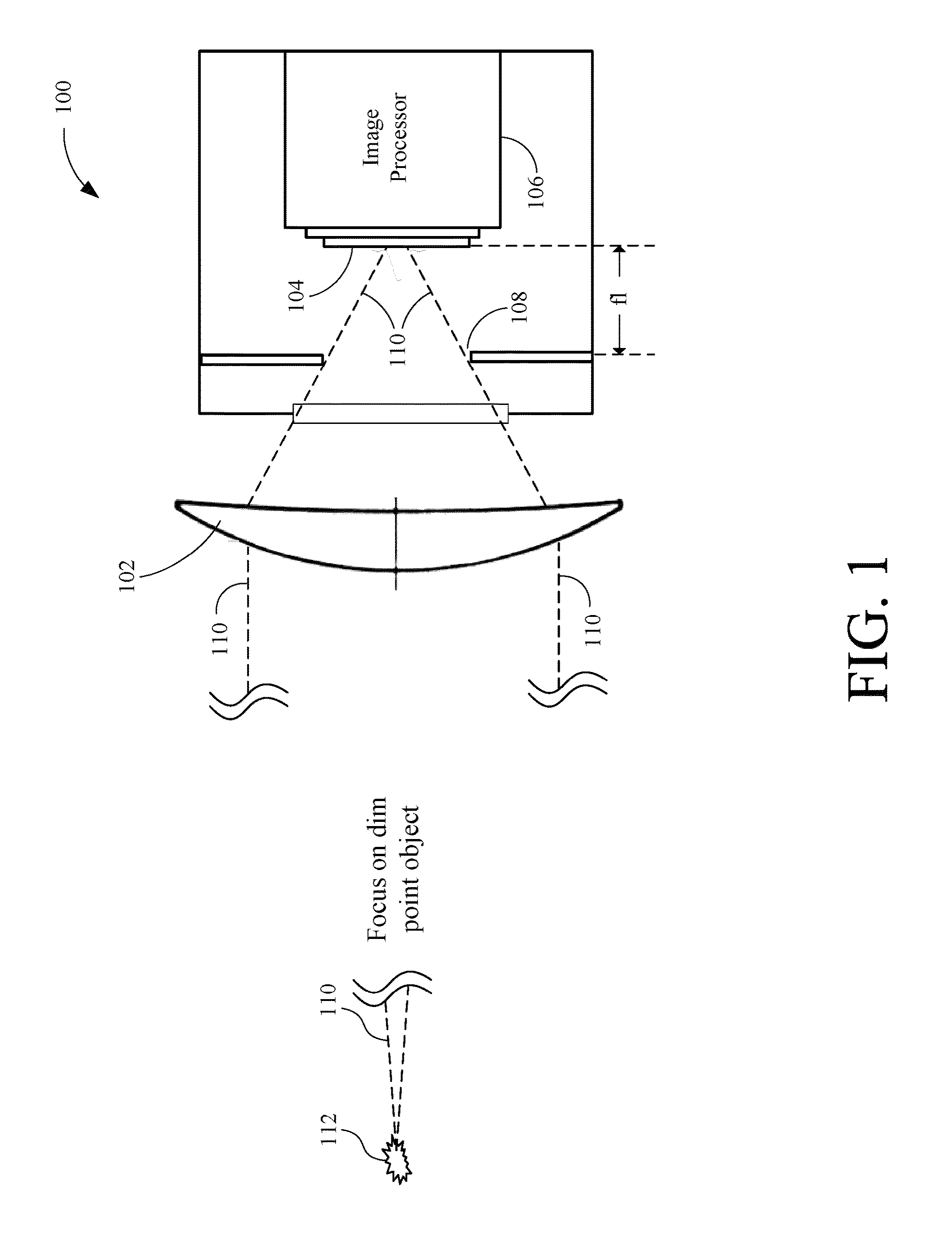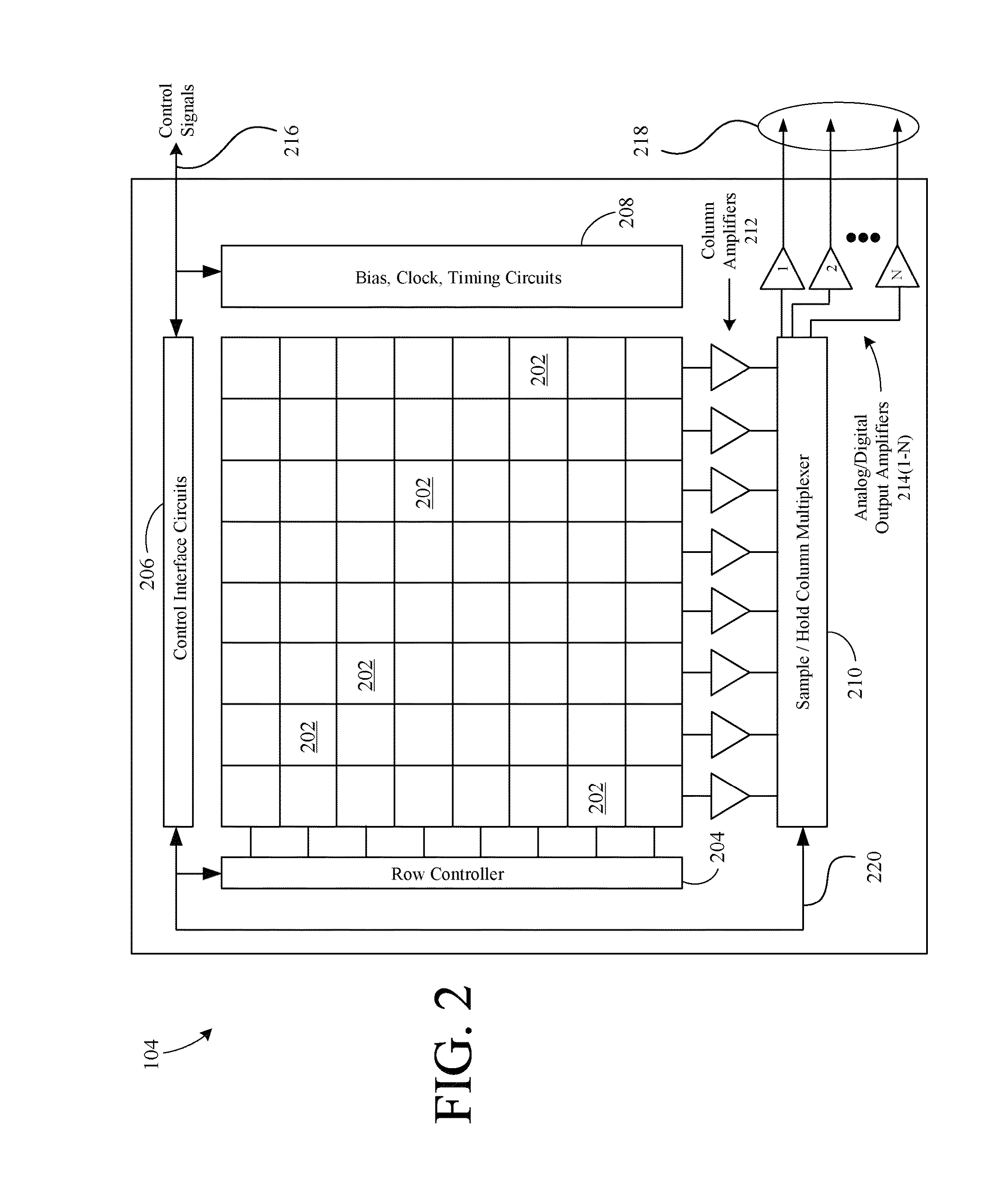System and method for using filtering and pixel correlation to increase sensitivity in image sensors
a technology of image sensor and filtering, applied in the field of solid-state imaging sensors, can solve the problems of missing, ignoring, or discarding imagery, and unable to detect, suppress false positives, and improve the sensitivity and false alarm rate. , the effect of improving the detection efficiency of targets
- Summary
- Abstract
- Description
- Claims
- Application Information
AI Technical Summary
Benefits of technology
Problems solved by technology
Method used
Image
Examples
Embodiment Construction
[0097]The embodiments and variations of the invention described herein, are presented by way of example only and are not limiting as to the scope of the invention. Unless otherwise specifically stated, individual aspects and components of the invention may be omitted or modified, or may have substituted therefore known equivalents, or as yet unknown substitutes such as may be developed in the future or such as may be found to be acceptable substitutes in the future. The invention may also be modified for a variety of applications while remaining within the spirit and scope of the claimed invention, since the current invention has multiple applications within several fields for a wide variety of imaging and surveillance systems.
[0098]An example embodiment of the present invention includes a highly pixilated sensor array. The pixilation facilitates a plurality of temporal and spatial sampling and filtering combinations or modes. Aspects of the invention provide improved noise characte...
PUM
 Login to View More
Login to View More Abstract
Description
Claims
Application Information
 Login to View More
Login to View More - R&D
- Intellectual Property
- Life Sciences
- Materials
- Tech Scout
- Unparalleled Data Quality
- Higher Quality Content
- 60% Fewer Hallucinations
Browse by: Latest US Patents, China's latest patents, Technical Efficacy Thesaurus, Application Domain, Technology Topic, Popular Technical Reports.
© 2025 PatSnap. All rights reserved.Legal|Privacy policy|Modern Slavery Act Transparency Statement|Sitemap|About US| Contact US: help@patsnap.com



